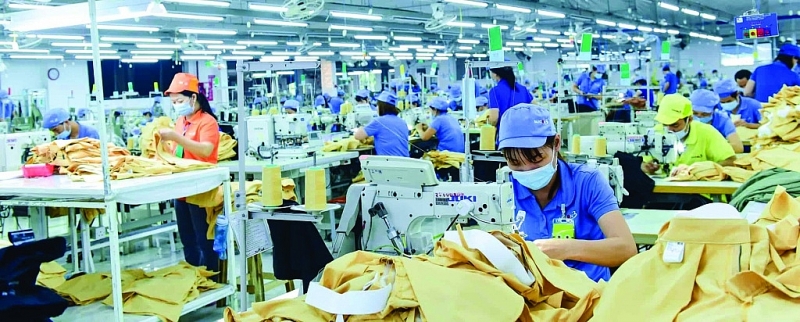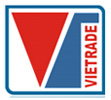
In the first 7 months of 2023, export orders of the key industries of textiles and garments, leather and footwear, wood and wood products decreased sharply by 18.9 billion USD (down 15.1%) and 11.7 billion USD (down 17.1%) and 7.2 billion USD (down 26.2%), respectively over the same period last year.
Major commodity industry declines
Deputy Minister of Industry and Trade Do Thang Hai said at the trade promotion meeting with the overseas trading system of Vietnam in July 2023 and July 31.
According to the Ministry of Industry and Trade, the export turnover of goods in July 2023 was estimated at 29.68 billion USD, up 0.8% over the previous month, down 3.5% year on year. In the first 7 months of 2023, export turnover of goods was estimated at 194.73 billion USD, down 10.6% year on year.
Import turnover of goods in July 2023 was estimated at 27.53 billion USD, up 4.4% month on month, down 9.9% year on year. In the first 7 months of 2023, the total export and import turnover of goods was estimated at 179.5 billion USD, down 17.1% year on year. Preliminary trade balance of goods in July 2023 was estimated at 2.15 billion USD.
Currently, many industries are facing difficulties in export markets due to global demand downtrend, in which, turnover of some key export industries such as textiles and garments, leather and footwear, wood, machinery, phones and components, etc recorded the plummet in the main markets such as the US, EU...
Talking about the state of the textile industry, Mr. Truong Van Cam, Vice President and General Secretary of the Vietnam Textile and Apparel Association, said "it has never been so difficult". According to Mr. Cam, the textile and garment industry is one of the hot growing industries in recent years. However, starting from the fourth quarter of last year until now, the textile industry has faced many difficulties.
We are in a volatile environment. Currently, 85% of Vietnam's textile and garment production capacity is for export, so the industry needs market information to respond promptly and effectively," said Mr. Truong Van Cam.
Mr. Ngo Sy Hoai, Vice President and General Secretary of the Vietnam Timber and Forest Product Association, said that despite facing great challenges, it should not be too pessimistic because this is only temporary. In order to regain export growth for the industry, including wood products, it needs the support of the Ministry of Industry and Trade, Vietnam's wood product marketing deal seeks markets, conveys the message that Vietnam performs strongly the commitment to provide legal wood products and strictly implement EU regulations.
Strictly following market developments
About the market, Mr. Tran Ngoc Quan, Commercial Counselor, Trade Office of Vietnam in Belgium and the EU said that Vietnamese leather and footwear is expanding their position in the EU. In 2016, Vietnam exported $3.3 billion to the EU, increasing to $5.9 billion in 2022. In the first 4 months of 2023, although the export turnover of leather and footwear products to this market increased sharply, Vietnam's footwear exports depended on a number of key brands in the EU.
With the textile and garment industry, the EU is considered the second largest export market of Vietnam with the constant high export turnover. Vietnam currently ranks 4th in terms of textile market share in the EU after China, Bangladesh, and Turkey. Similar to leather and footwear, thanks to a lot of tax incentives, Vietnam's textile and garment industry inherits potentials to expand exports to this market. Given furniture industry, although Vietnam exports turnover to the EU was 57 million USD in 2022, strict requirements related to the environment from this market is also a challenge for wood industry enterprises to increase their market share.
According to Mr. Tran Ngoc Quan, the Vietnam - EU Free Trade Agreement (EVFTA) enables Vietnam's textile, garment, footwear and wooden products industries to promote exports to the EU. To take advantage of these advantages, meeting the rules of origin is very important. On the other hand, while the EU is strongly shifting to a circular economy, domestic enterprises need to transform because when the regulations come into force, it will strongly affect their exports.
Mr. Do Manh Quyen, Head of Trade Branch, Vietnam Trade Office Branch in Houston, USA recommends that foreign goods enterprises not only focus on large distribution channels, but also study on niche markets in order to take initiatives in case of demand shortage and disconnection from key importers and so as not to fall into a state of disruption. At the same time, trade promotion activities should look to businesses and local people to sign consulting contracts to get the opportunity to deal with inventory and retail goods.
In order to support businesses to overcome challenges and take advantage of rare opportunities, Deputy Minister Do Thang Hai suggested that Vietnamese deals abroad need to carry further research on the market demands, assess host country policies. Moreover, it is necessary to promptly advise the Ministry on market development strategies and trade connections; make recommendations to help industry associations, businesses, and localities to develop and adjust appropriate production and business strategies and plans; receive suggestions from business associations and localities to have plans to support associations and localities in market development.
Source: VCN
Keywords: furniture, footwear, textile, garment, industries, difficulties



















